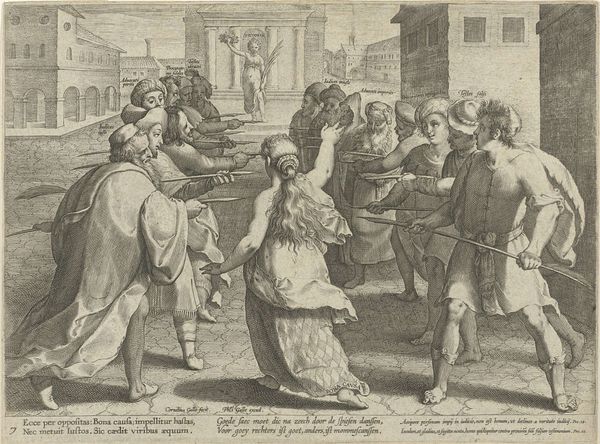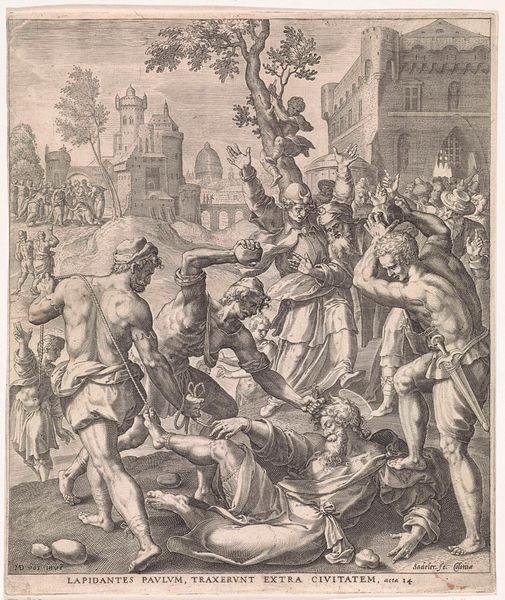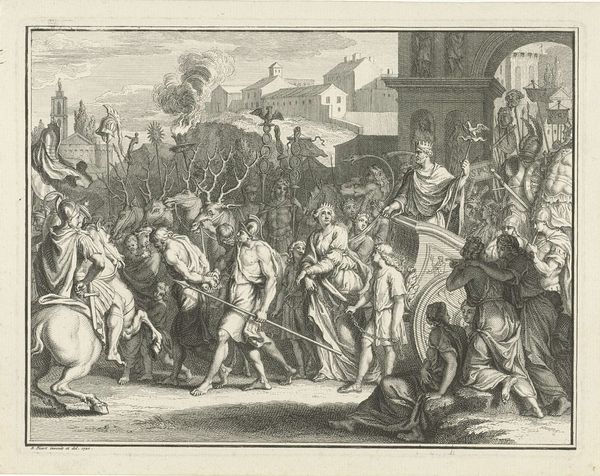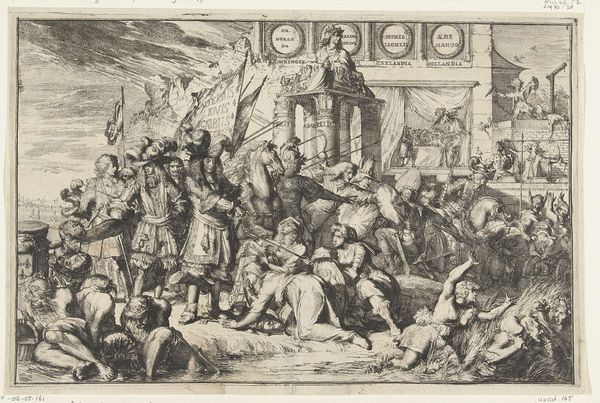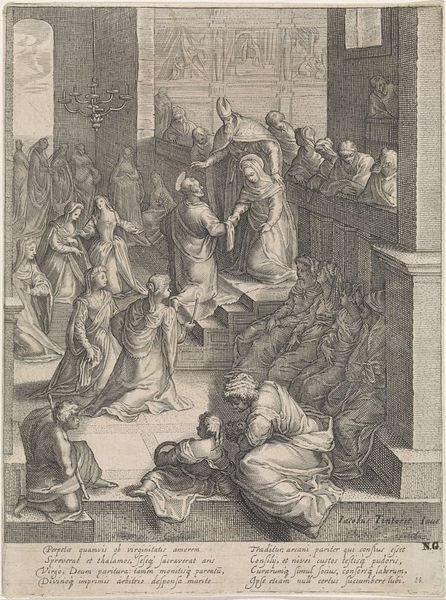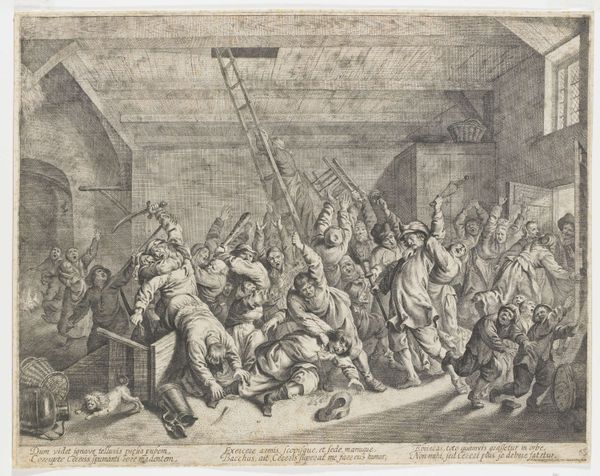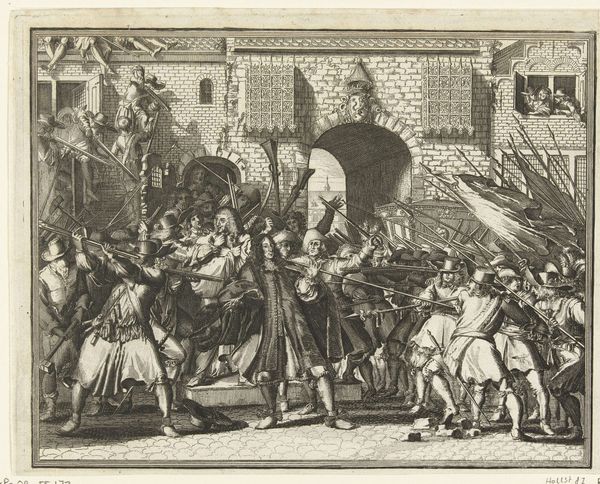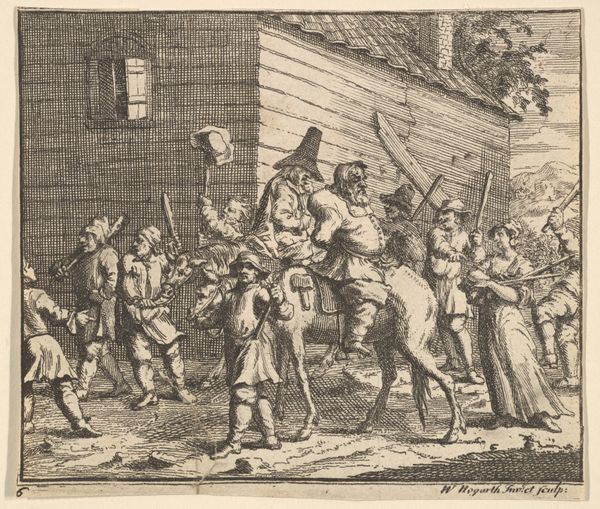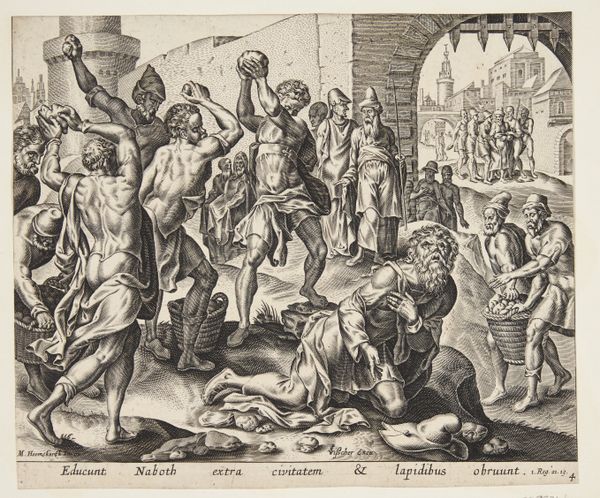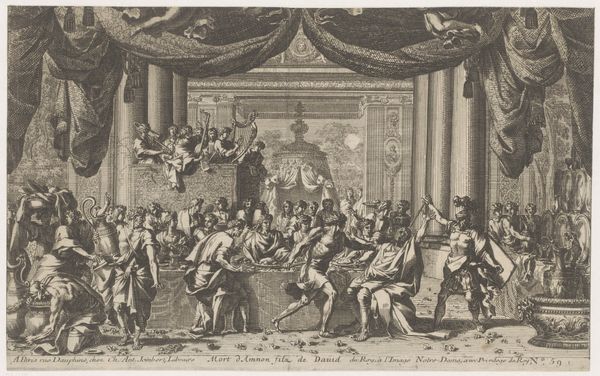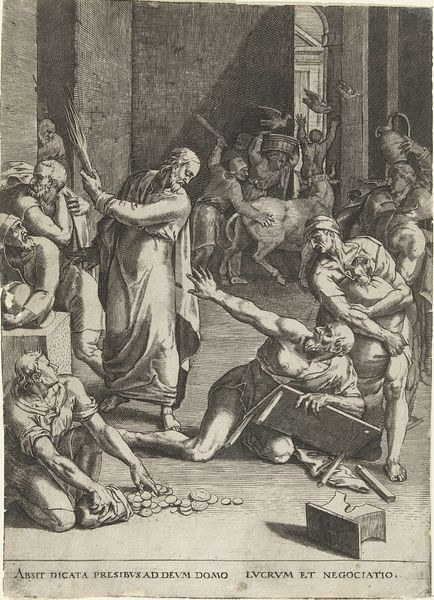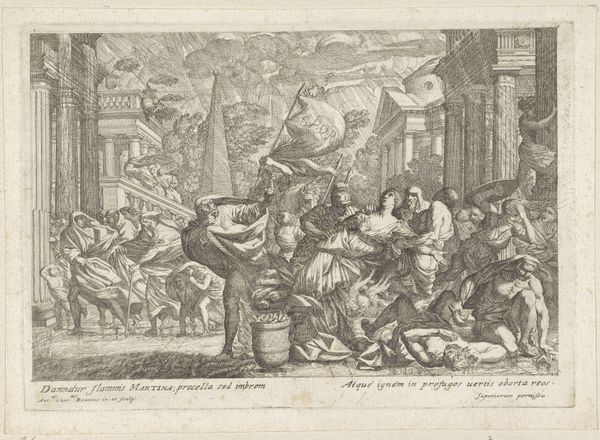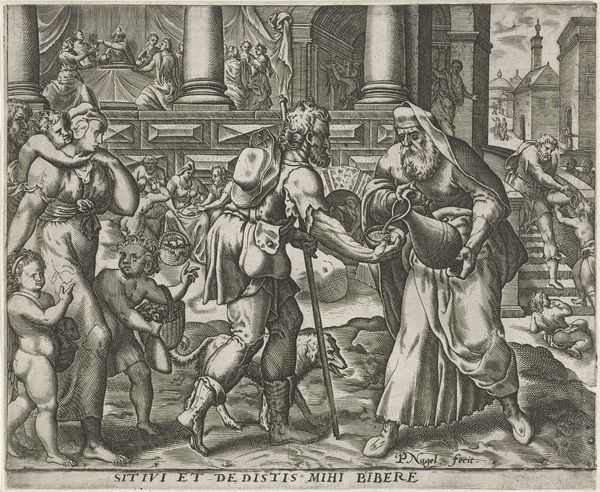
#
light pencil work
#
ink drawing
#
pen drawing
#
mechanical pen drawing
#
pen sketch
#
pencil sketch
#
ink drawing experimentation
#
pen-ink sketch
#
pen work
#
pencil art
Dimensions: height 427 mm, width 588 mm
Copyright: Rijks Museum: Open Domain
Curator: Jacob Matham's "Marcus redt een slaaf van zijn marteling," created between 1593 and 1597, depicts a dramatic scene rendered with pen and ink. It's part of the Rijksmuseum's collection, showcasing Matham's skill in engraving and his exploration of humanist themes. Editor: Whoa, a slave getting saved—you can really feel the intensity of that rescue! But the execution... looks upside-down to me! Very peculiar angle of narrative—it feels like everyone's performing for an unseen audience high above. Curator: Indeed! The dramatic rescue scene is full of references to the history of the classical world; it is very much related to the re-emergence of classical knowledge and its new interpretations within political contexts during this period. This interest certainly informed the artistic choices. Editor: True, the context makes the whole stage set aspect click. I also notice how sharply the expressions and gestures contrast—horror versus noble action. Is that an attempt to amp up the morality play aspects, a very blatant 'good versus bad' battle? Curator: It could be! Morality was indeed the center of interest. Moreover, the emphasis placed on representing highly dramatic scenes makes this print resonate with certain concepts of drama as they circulated within humanist circles at the time. Editor: That definitely aligns with its stage-y atmosphere. The architecture and crowded figures give the work such gravity, too! So what does rescuing a slave really mean in the late 16th Century? Curator: Well, looking back at Matham's circle, slavery’s representation speaks less about changing power dynamics of a society, and much more about constructing a theater for good government; rulers being inspired by noble actions like these... Editor: Hmmm... so almost propaganda? That does change the way I see it—puts an edge of intentional narrative shaping onto the emotion. So fascinating. Curator: These prints offered narratives, but these narratives need understanding, the art can serve very concrete sociopolitical projects. Editor: Absolutely, understanding the intention colors the whole experience differently. It stops just being an emotionally fraught scene, and suddenly asks more uncomfortable questions. What a treasure to unpack.
Comments
No comments
Be the first to comment and join the conversation on the ultimate creative platform.
